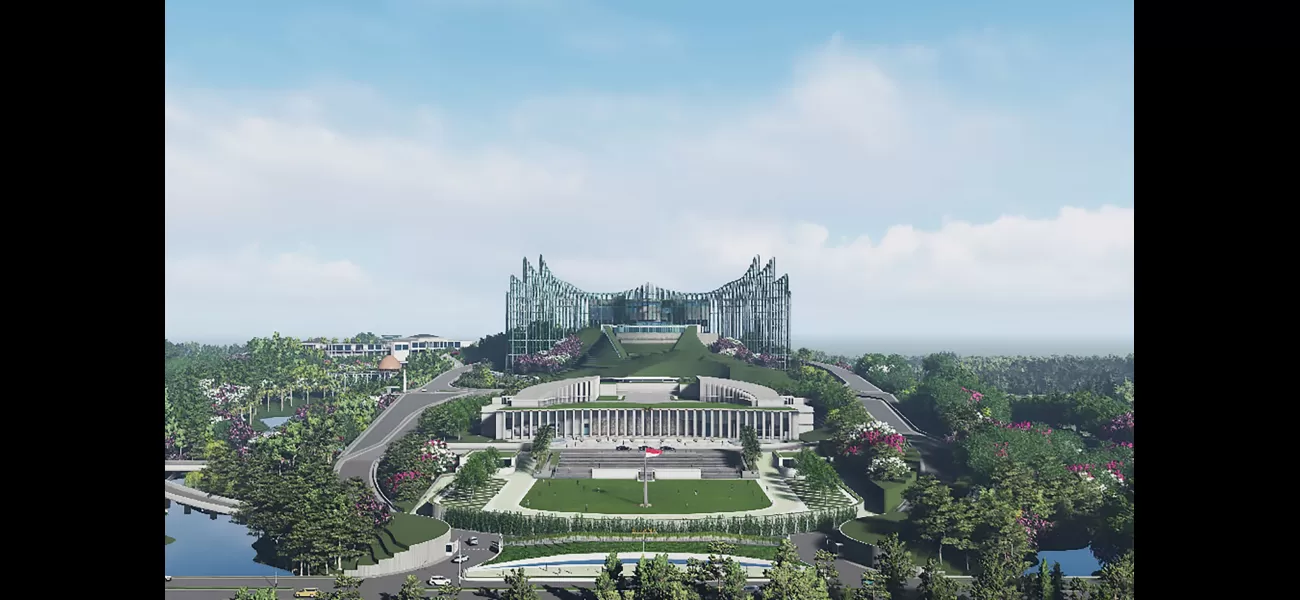A proposal to relocate a capital city worth £32 billion is at risk.
The cost of the project is expected to be around $32 billion.
June 20th 2024.

Indonesia, a country with a rich history and culture, is facing a dilemma with its capital city, Jakarta. Home to over 10.5 million people, Jakarta has been continuously inhabited for centuries, making it one of the oldest cities in Southeast Asia. However, the city is slowly sinking into the ground due to its swampy location and the effects of climate change. This, along with other environmental challenges, has led the Indonesian government to make a bold decision - to build an entirely new capital city.
The new capital, called Nusantara, is set to be located in East Kalimantan, a province on the island of Borneo. This plan, estimated to cost around $32 billion, was announced by President Joko Widodo in 2017 and was ratified two years later. The main reason for this move is to combat the sinking of Jakarta and to create a more sustainable and modern city. However, the project has faced its fair share of challenges and criticism.
The new city, which is expected to be completed by 2045, will span over 990 square miles and will be surrounded by lush greenery, hilly landscapes, and a natural bay. The construction of Nusantara began in July 2022, with a focus on sustainability and innovation. The architects and urban planners behind the project aim to create a green and futuristic city, blending modern infrastructure with the natural environment. This includes extensive green spaces, renewable energy systems, and smart city technologies.
One of the main goals of Nusantara is to minimize carbon emissions, which is a stark contrast to Jakarta's current state. The city will prioritize public transportation and pedestrian-friendly pathways, making it a more eco-friendly and sustainable option. The new city is also set to have a VVIP airport, housing, transport, telecommunication, and renewable energy projects, with an estimated investment of up to $1 billion.
Despite all the positive PR and incentives, the project has faced several challenges, including the recent resignations of top officials and financial issues. These issues have raised concerns about the project's future and the amount of money already invested in it. This has also caused unease among local Indigenous communities, who fear the impact of the new city on their environment and livelihoods.
The construction of Nusantara has already forced many Indigenous communities to vacate their homes and abandon their farmlands, with little to no compensation. This has caused resentment and a feeling of being pushed away from their own land. The project's first phase aims to create a core government area with a population of 1.2 million by 2029, but it remains to be seen how this will affect the surrounding environment and communities.
In conclusion, the plan for Nusantara is ambitious and has faced its fair share of challenges and criticism. While its goal of creating a sustainable and modern city is commendable, it is essential to consider the impact on the environment and local communities. As construction continues, only time will tell if Nusantara will fulfill its promise of being a green and futuristic capital for Indonesia.
The new capital, called Nusantara, is set to be located in East Kalimantan, a province on the island of Borneo. This plan, estimated to cost around $32 billion, was announced by President Joko Widodo in 2017 and was ratified two years later. The main reason for this move is to combat the sinking of Jakarta and to create a more sustainable and modern city. However, the project has faced its fair share of challenges and criticism.
The new city, which is expected to be completed by 2045, will span over 990 square miles and will be surrounded by lush greenery, hilly landscapes, and a natural bay. The construction of Nusantara began in July 2022, with a focus on sustainability and innovation. The architects and urban planners behind the project aim to create a green and futuristic city, blending modern infrastructure with the natural environment. This includes extensive green spaces, renewable energy systems, and smart city technologies.
One of the main goals of Nusantara is to minimize carbon emissions, which is a stark contrast to Jakarta's current state. The city will prioritize public transportation and pedestrian-friendly pathways, making it a more eco-friendly and sustainable option. The new city is also set to have a VVIP airport, housing, transport, telecommunication, and renewable energy projects, with an estimated investment of up to $1 billion.
Despite all the positive PR and incentives, the project has faced several challenges, including the recent resignations of top officials and financial issues. These issues have raised concerns about the project's future and the amount of money already invested in it. This has also caused unease among local Indigenous communities, who fear the impact of the new city on their environment and livelihoods.
The construction of Nusantara has already forced many Indigenous communities to vacate their homes and abandon their farmlands, with little to no compensation. This has caused resentment and a feeling of being pushed away from their own land. The project's first phase aims to create a core government area with a population of 1.2 million by 2029, but it remains to be seen how this will affect the surrounding environment and communities.
In conclusion, the plan for Nusantara is ambitious and has faced its fair share of challenges and criticism. While its goal of creating a sustainable and modern city is commendable, it is essential to consider the impact on the environment and local communities. As construction continues, only time will tell if Nusantara will fulfill its promise of being a green and futuristic capital for Indonesia.
[This article has been trending online recently and has been generated with AI. Your feed is customized.]
[Generative AI is experimental.]
0
0
Submit Comment





